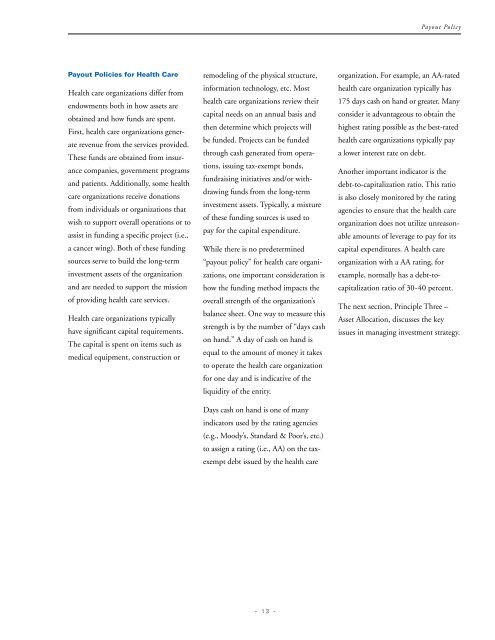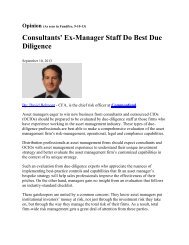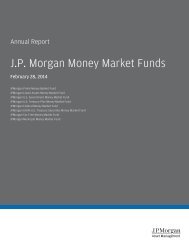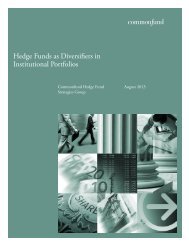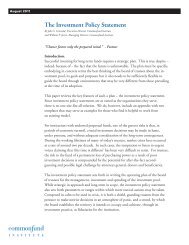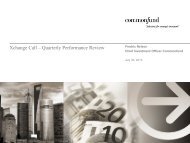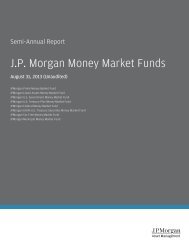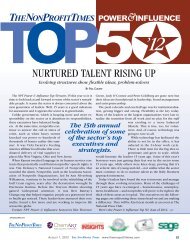Principles of Nonprofit Investment Management - Commonfund
Principles of Nonprofit Investment Management - Commonfund
Principles of Nonprofit Investment Management - Commonfund
Create successful ePaper yourself
Turn your PDF publications into a flip-book with our unique Google optimized e-Paper software.
Payout PolicyPayout Policies for Health CareHealth care organizations differ fromendowments both in how assets areobtained and how funds are spent.First, health care organizations generaterevenue from the services provided.These funds are obtained from insurancecompanies, government programsand patients. Additionally, some healthcare organizations receive donationsfrom individuals or organizations thatwish to support overall operations or toassist in funding a specific project (i.e.,a cancer wing). Both <strong>of</strong> these fundingsources serve to build the long-terminvestment assets <strong>of</strong> the organizationand are needed to support the mission<strong>of</strong> providing health care services.Health care organizations typicallyhave significant capital requirements.The capital is spent on items such asmedical equipment, construction orremodeling <strong>of</strong> the physical structure,information technology, etc. Mosthealth care organizations review theircapital needs on an annual basis andthen determine which projects willbe funded. Projects can be fundedthrough cash generated from operations,issuing tax-exempt bonds,fundraising initiatives and/or withdrawingfunds from the long-terminvestment assets. Typically, a mixture<strong>of</strong> these funding sources is used topay for the capital expenditure.While there is no predetermined‘‘payout policy” for health care organizations,one important consideration ishow the funding method impacts theoverall strength <strong>of</strong> the organization’sbalance sheet. One way to measure thisstrength is by the number <strong>of</strong> ‘‘days cashon hand.” A day <strong>of</strong> cash on hand isequal to the amount <strong>of</strong> money it takesto operate the health care organizationfor one day and is indicative <strong>of</strong> theliquidity <strong>of</strong> the entity.Days cash on hand is one <strong>of</strong> manyindicators used by the rating agencies(e.g., Moody’s, Standard & Poor’s, etc.)to assign a rating (i.e., AA) on the taxexemptdebt issued by the health careorganization. For example, an AA-ratedhealth care organization typically has175 days cash on hand or greater. Manyconsider it advantageous to obtain thehighest rating possible as the best-ratedhealth care organizations typically paya lower interest rate on debt.Another important indicator is thedebt-to-capitalization ratio. This ratiois also closely monitored by the ratingagencies to ensure that the health careorganization does not utilize unreasonableamounts <strong>of</strong> leverage to pay for itscapital expenditures. A health careorganization with a AA rating, forexample, normally has a debt-tocapitalizationratio <strong>of</strong> 30-40 percent.The next section, Principle Three –Asset Allocation, discusses the keyissues in managing investment strategy.- 13 -


